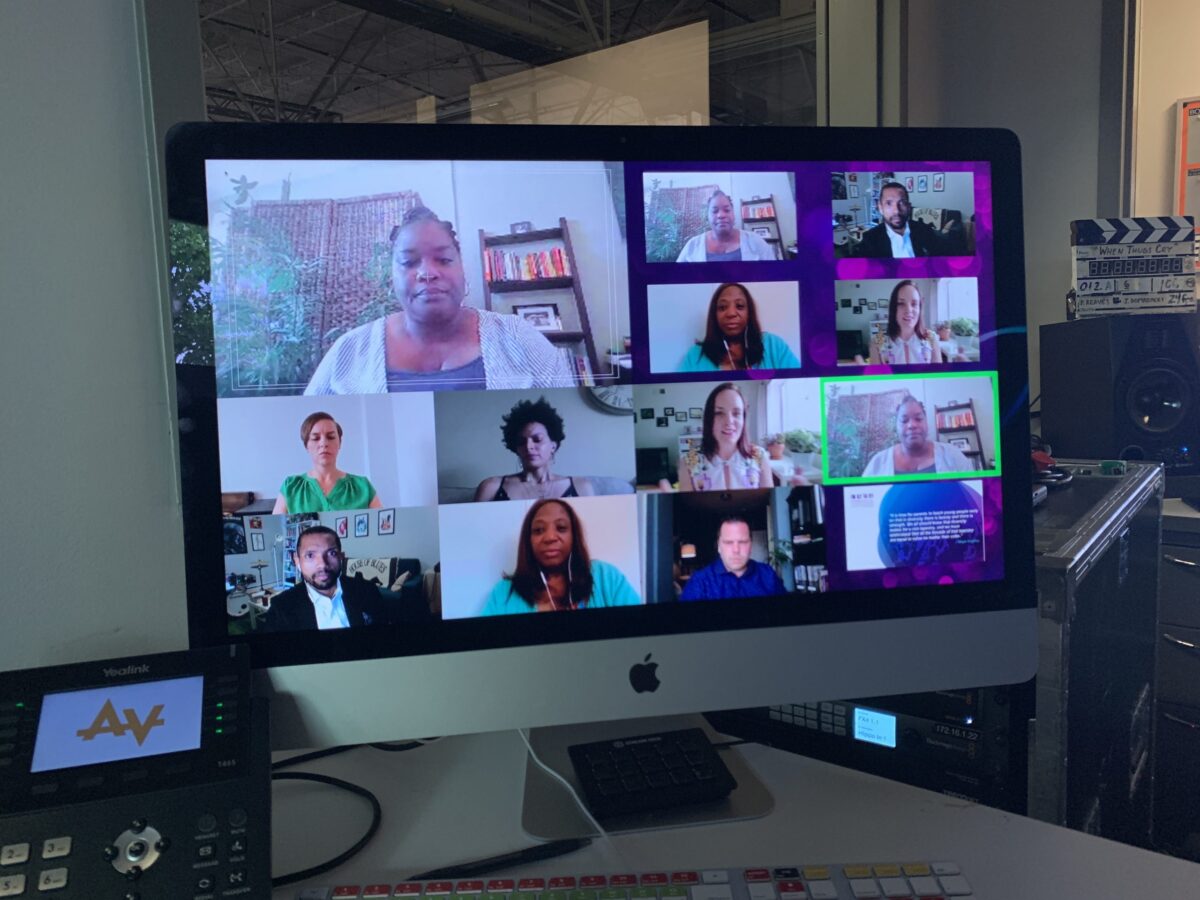
5 Best Practices for presenting at a Virtual Event
Looking for virtual presentation tips?
We get it. Speaking to an audience can be stressful regardless of your stage (or at-home office). The five presentation best practices below will have you feeling more confident and provide a better experience for those in your audience.
- Ask for a tech check
Whether it is your first time presenting on a virtual platform or the one hundredth, make sure you work with the technicians and event host to schedule a tech check. This makes sure that you know the features of the platform, you know your system is configured for their set up and it makes you look like a pro! We have all been there when a presenter’s audio doesn’t work, and we can’t hear them or there is a weird background noise that impacts the audience from hearing what you have to say.
- Speaking of Audio…
Make sure that you are using an external headset or speaker. Using the microphone from your laptop can make you sound garbled or like a robot. It can also cause an audio echo and will not only be distracting for you as the presenter but also for the audience. This is easily fixed by utilizing a USB or external headset.
In addition, make sure that you find a quiet place where you can present. We are all working from home, so we understand hearing the kids and a dog barking, but when presenting at an event do your best to minimize the external noise.
- What people see is important!
Camera angles make a difference and can impact how people see you. You don’t want people looking up your nose or from the side, you want them looking at you face on. Test your camera position prior to presenting, make sure you are centered on camera. Make sure you position your camera at a good distance (about an arm’s length away) so that you aren’t too close or too far. If you are able, grab a webcam external to your laptop to make it easier for positioning. If you are using multiple monitors, make sure your camera is above the monitor you are looking at, make sure the monitor with the virtual event is the same on your camera is positioned. That way you are looking at the audience, not your other monitor. By doing this you will be your production teams’ best friend because they will be able to get you framed nicely for the stream!
It is also important to note what is surrounding you on screen. Make sure you have a clean area, clean of clutter. Bonus points for a clean neutral background that isn’t busy. Again, you want people focusing on you and what you are saying, not what you have behind or around you.
- Lighting matters.
We have all seen people who aren’t lit well and end up looking like they are in the witness protection program. This is caused because there is too much light behind them. To prevent this, try to make sure you have a light source from in front of you. Light rings are a great way to get this lighting without being a lighting pro (you will just look like one 😉 ). Also, try not to have light coming from above, this can cause shadows under your eyes and nose, which could make you look tired. You are excited about presenting so you want your face to show it.
- What should you wear?
What you wear can visually impact your presentation. If you are wearing a heavily patterned shirt, it can come off weird on camera. I have this one super comfy shirt, and I love wearing it but every time I am on a video call with it, I remember that the pattern morphs and changes shape and is frankly distracting. Plan what you are going to wear when you present and test it out. Solid neutral colors are best for clothing with limited simple patterns or lines. If you are unsure, ask the production team or jump on a video call with a friend to see how it translate on camera.
This really isn’t a presentation best practice but a reminder, smile, have fun and come prepared. People are joining to see you and hear what you have to say!

